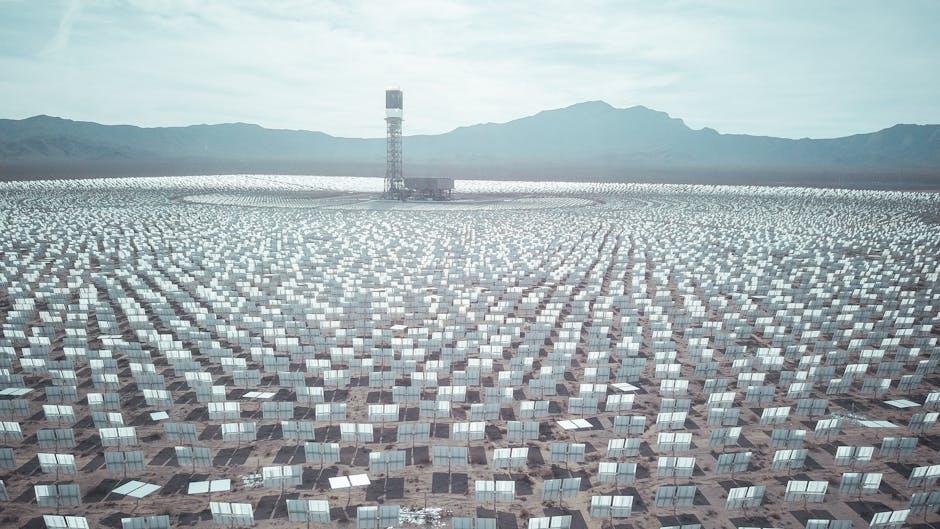In a world increasingly aware of its environmental footprint, the allure of solar energy continues to grow, casting a bright light on the promise of sustainability. Among the various paths to harnessing this renewable resource, off-grid solar systems offer a unique sense of independence and self-reliance. Yet, as appealing as it may sound to unshackle from traditional power grids, the journey towards off-grid solar solutions is paved with financial considerations that require careful navigation. This article delves into the nuanced landscape of costs associated with off-grid solar systems, unraveling the factors that influence pricing, the hidden expenses often overlooked, and the long-term economic implications. Whether you’re a pioneer ready to embrace energy autonomy or simply curious about the financial terrain of solar technology, understanding the cost of off-grid solar systems is essential in making informed decisions that align with both your wallet and your environmental ethos.
Breaking Down the Financial Landscape of Off-Grid Solar
Venturing into the realm of off-grid solar systems involves navigating a complex financial landscape, where costs can vary widely based on a multitude of factors. Initial investment is often the most substantial barrier, encompassing everything from solar panels and batteries to inverters and charge controllers. These components, crucial for harnessing and storing solar energy, require careful consideration of quality versus cost, as cheaper alternatives might lead to higher maintenance expenses in the long run. Beyond hardware, installation costs must be factored in, which can fluctuate depending on the location, accessibility, and the expertise of the installer.
Once the system is operational, ongoing expenses become the focus. Key considerations include:
- Maintenance: Regular upkeep ensures efficiency and longevity, which might entail periodic battery replacements or panel cleaning.
- Energy Management: Investing in smart energy management systems can optimize usage, reducing overall costs.
- Insurance: Protecting the system against unforeseen events like natural disasters can be a prudent financial decision.
Understanding these financial dynamics is crucial for anyone looking to transition to off-grid living, as it empowers individuals to make informed decisions that align with their long-term sustainability goals.
Exploring Installation and Maintenance Costs
When delving into the intricacies of off-grid solar systems, the installation costs often represent a significant initial investment. The total expenditure varies depending on the scale of the system and the geographical location. Key components such as solar panels, inverters, batteries, and mounting structures each add to the financial layout. It’s crucial to consider the costs of permits and labor as well, which can fluctuate based on local regulations and the complexity of the installation. Some homeowners may opt for a DIY approach to reduce costs, but hiring professionals often ensures optimal system performance and longevity.
Beyond installation, maintenance expenses are an essential factor in the long-term financial plan for off-grid solar systems. Routine checks and cleaning of solar panels help maintain efficiency and prolong the lifespan of the system. Additionally, components like batteries may require periodic replacement, contributing to ongoing costs. It’s beneficial to set aside a budget for unexpected repairs, ensuring that the system remains functional and efficient. A well-maintained solar system not only safeguards your investment but also enhances energy independence and sustainability.

Maximizing Investment with Smart Component Choices
When planning an off-grid solar system, strategic component selection can significantly enhance your return on investment. Prioritizing quality over cost can ensure long-term reliability and efficiency. Start by considering solar panels that offer a balance of high efficiency and durability. Inverters should be chosen not only for their capacity but also for their compatibility with future system expansions. Opt for batteries with proven longevity and performance, as these can greatly affect the overall system lifespan and maintenance costs.
- Solar Panels: Look for high-efficiency models with robust warranties.
- Inverters: Ensure compatibility and potential for scalability.
- Batteries: Choose options known for longevity and reliability.
- Charge Controllers: Consider those that optimize charging and extend battery life.
Additionally, integrating smart energy management systems can further optimize energy usage and storage, ultimately reducing costs. While initial investments might seem steep, these smart choices pave the way for a more sustainable and economically viable off-grid lifestyle.

Strategies for Reducing Long-Term Expenses
Investing in an off-grid solar system can significantly lower your long-term expenses, but it requires a strategic approach. One effective strategy is to conduct a thorough energy audit before installation. By understanding your energy consumption patterns, you can determine the exact size and type of solar system needed, preventing overspending on unnecessary capacity. Furthermore, prioritize the use of energy-efficient appliances and LED lighting, which can reduce the overall load on your solar system, thus extending its lifespan and efficiency.
Another key strategy is to take advantage of available incentives and rebates. Many governments offer financial incentives to encourage the adoption of renewable energy solutions, which can substantially offset the initial costs of setting up your solar system. Additionally, regular maintenance and monitoring of your system is crucial. This includes cleaning panels, checking connections, and ensuring batteries are functioning optimally. Proper upkeep not only enhances the system’s performance but also minimizes repair costs over time.
The Way Forward
As we draw the curtains on our exploration of the costs surrounding off-grid solar systems, it’s clear that this journey towards energy independence is as much about financial considerations as it is about embracing a sustainable future. The path to harnessing the sun’s abundant energy is paved with initial investments, ongoing maintenance, and the potential for substantial long-term savings. However, beyond the numbers lies the profound impact on our environment and the promise of a more resilient lifestyle. Whether you’re motivated by the allure of reducing your carbon footprint or the prospect of liberation from traditional power grids, understanding these costs is your compass. As you stand on the brink of this transformative decision, let the sun guide you towards a future that not only illuminates your home but also brightens our collective journey toward sustainability.

































